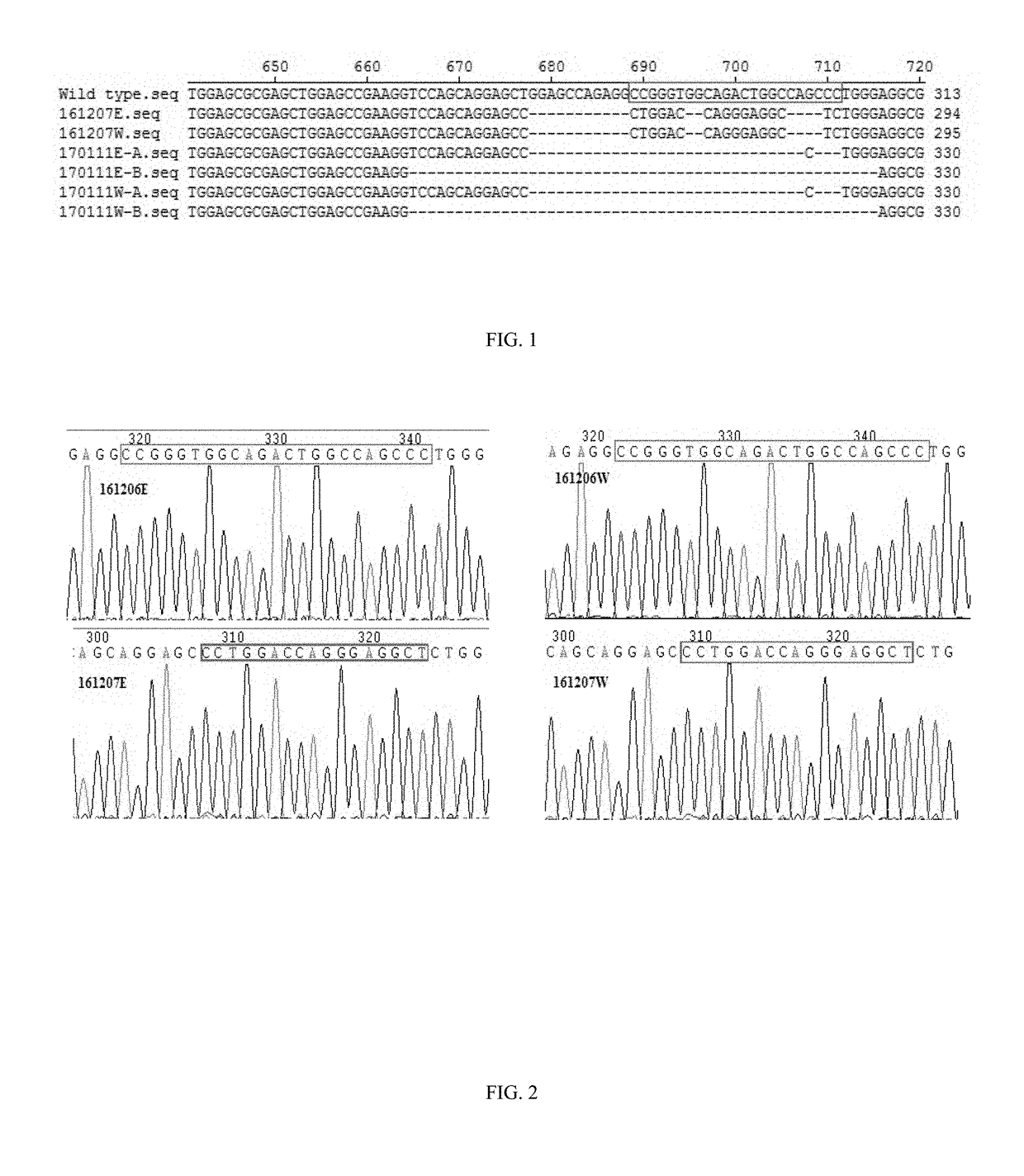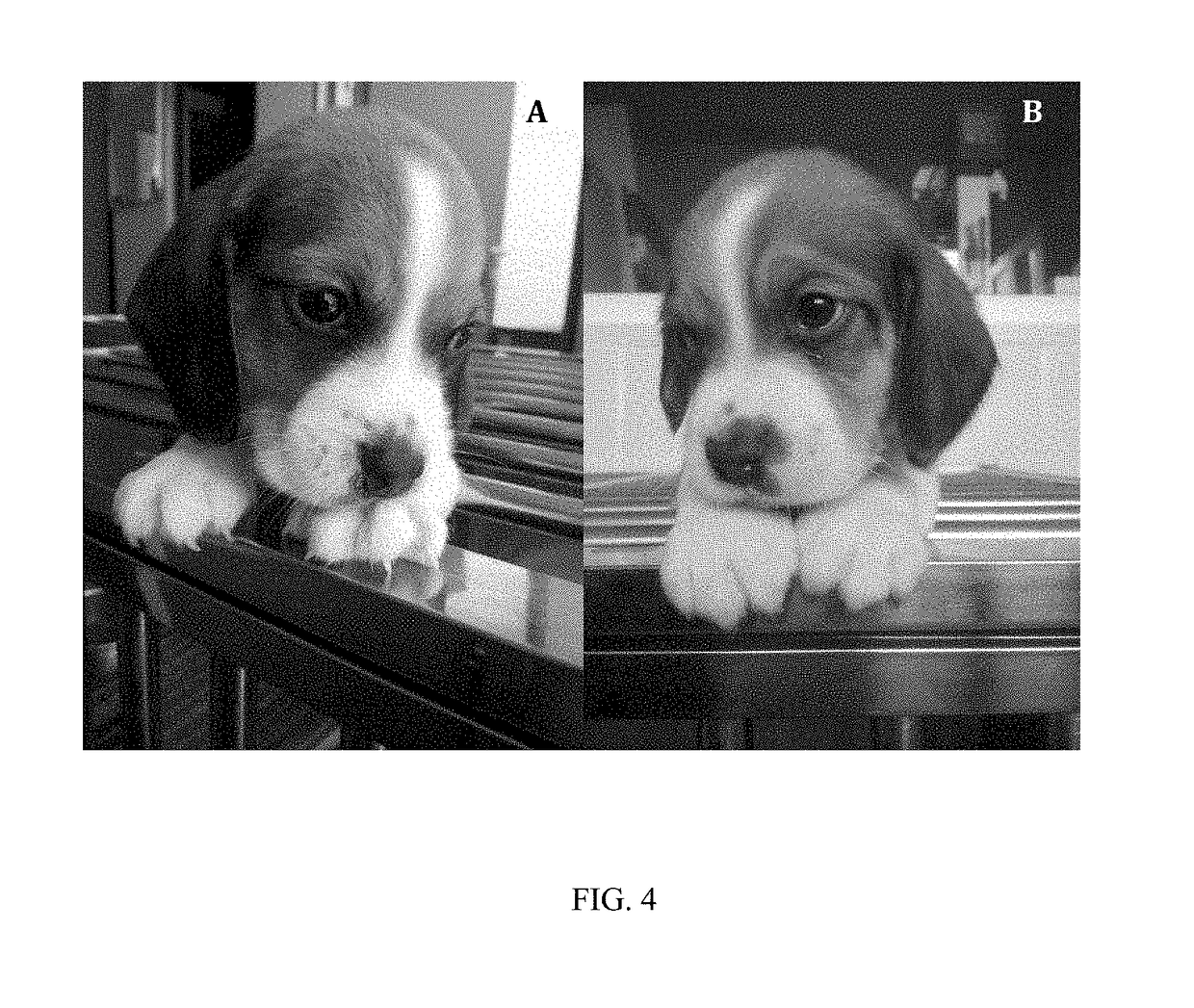Method for preparing a gene knock-out canine with somatic cell cloning technology
a somatic cell and gene technology, applied in the field of gene knockout canine with somatic cell cloning technology, can solve the problems of difficult success of canine and somatic cell cloning canine, short phenotype of canine animal models, and inability to simulate human disease symptoms, etc., to achieve the effect of improving the efficiency of cloning canine, improving embryo fusion efficiency, and improving the efficiency of pregnancy
- Summary
- Abstract
- Description
- Claims
- Application Information
AI Technical Summary
Benefits of technology
Problems solved by technology
Method used
Image
Examples
examples
[0059](1) Preparing an APOE Gene Knock-Out Canine
Preparing an APOE gene knock-out canine comprises the following steps:
[0060](1) determining a targeting site sequence directed to a sequence of an exon based on the canine APOE gene sequence;
[0061](2) synthesizing sgRNA sequence and the complementary sequence thereof according to the targeting site sequence determined in step (1), then the synthesized sequence is connected to skeleton vector to construct a sgRNA targeting vector;
[0062](3) in vitro transcription of sgRNA targeting vector to obtain mRNA of sgRNA, and in vitro transcription of CRISPR / Cas9 to obtain mRNA;
[0063](4) mixing mRNA of sgRNA and mRNA of CRISPR / Cas9 obtained in step (3) and then intracytoplasmic injection thereof into a fertilized ovum of the canine; and
[0064](5) transplanting the fertilized ovum of the canine into the less bleeding side of fallopian tubes of a female canine of which both fallopian tubes have been embryo flushed.
[0065]The targeting site sequence ...
PUM
| Property | Measurement | Unit |
|---|---|---|
| humidity | aaaaa | aaaaa |
| humidity | aaaaa | aaaaa |
| humidity | aaaaa | aaaaa |
Abstract
Description
Claims
Application Information
 Login to View More
Login to View More - R&D
- Intellectual Property
- Life Sciences
- Materials
- Tech Scout
- Unparalleled Data Quality
- Higher Quality Content
- 60% Fewer Hallucinations
Browse by: Latest US Patents, China's latest patents, Technical Efficacy Thesaurus, Application Domain, Technology Topic, Popular Technical Reports.
© 2025 PatSnap. All rights reserved.Legal|Privacy policy|Modern Slavery Act Transparency Statement|Sitemap|About US| Contact US: help@patsnap.com



